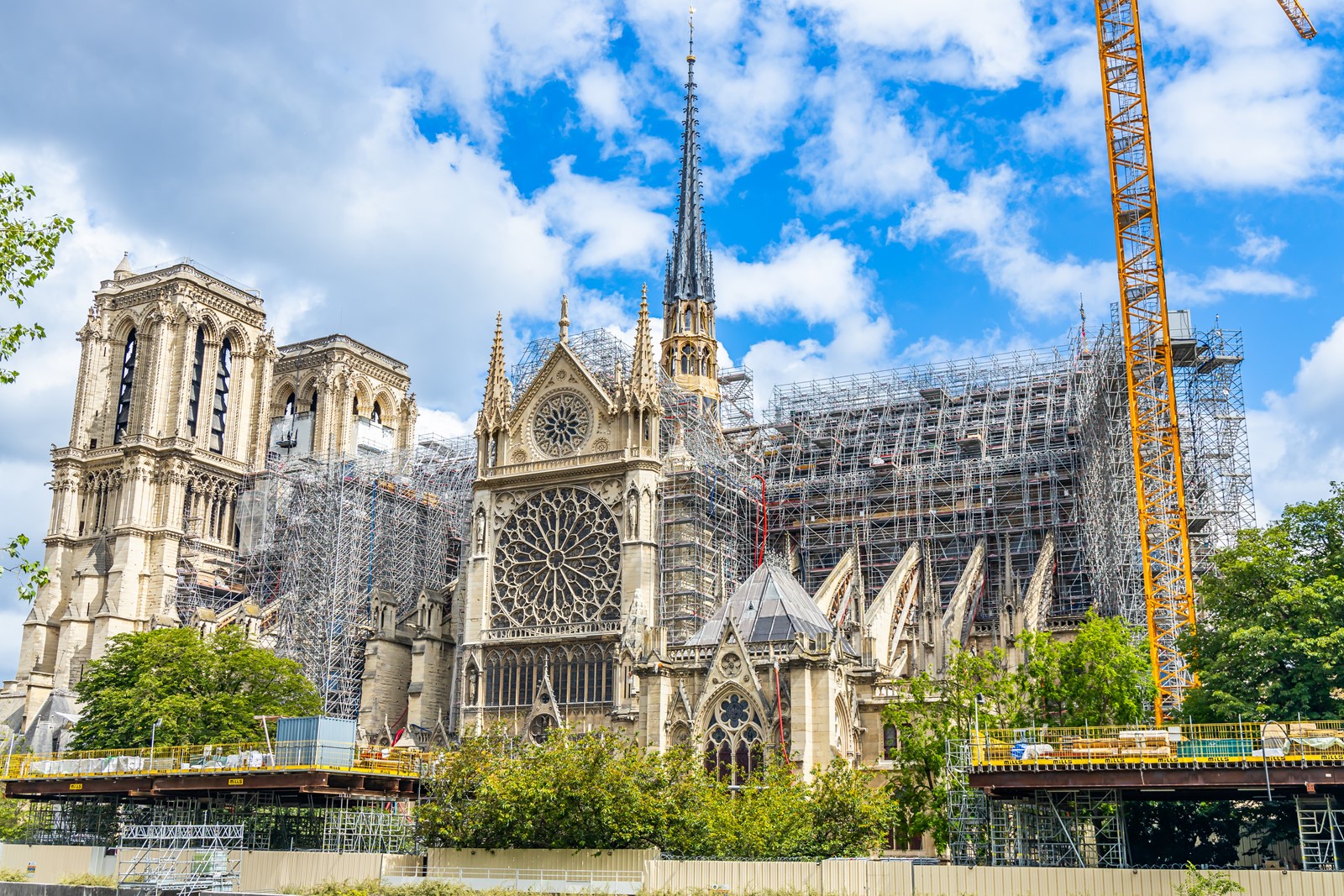



Millions watched on television in horror April 15, 2019, as plumes of fire shot up from the Notre-Dame de Paris, one of the world’s oldest and most celebrated cathedrals. At first, the devastation seemed nearly total, with much of the roof and the iconic spire lost to flames. But today, more than five years later, visitors once more pour into its sanctuary, eager to see how the $1 billion restoration project has progressed.
I was lucky enough to visit Easter Sunday this year, a day filled with Masses and special events. Thousands of families — tourists and locals alike — stood patiently in line for hours to get inside, to attend a Mass or just have a chance to see the remarkable restoration.
The interior reopened to the public Dec. 8, although much restoration remains to be done. Giant cranes still hang over the building, but thousands of people a day line up to see the rebuilt interior.
Larger than a football field, the inside of the cathedral now glows with oatmeal-colored walls and cavernous vaulted ceilings, after the controversial decision to wash them with a latex solution, obscuring the old soot and candle smoke of the centuries. If you’re used to seeing gray, grimy walls in ancient buildings, you may be startled to walk in and see the light-filled interior.
The French government, which owns Notre-Dame, made the decision in 2019 to rebuild the cathedral as it was before the fire, and vowed to do it within five years — a deadline that was only exceeded by a few months. There have been some changes, including a modern bronze main altar, baptismal font and lectern. Some people would have preferred a more traditional style, but the new style is not jarring.
Fortunately for posterity, the cathedral’s three magnificent medieval rose windows, created in the 13th century, were saved from the inferno. The sanctuary is covered with stained glass, thanks to an architectural innovation of the time. The so-called flying buttresses pulled the weight of the roof outside the structure, meaning the interior walls could be opened up for spectacular displays of leaded and stained glass. The ancient, 8,000-pipe organ was also saved and restored, removing toxic dust that had settled there from the collapsed lead roof.
You could spend hours looking around at all the details, but I like to attend a service when I visit remarkable churches. That’s when they show their true selves, including the faith of the worshippers. If you can go to a high Mass, also known as a Gregorian Mass, you’ll see the worship at its finest.
No ancient European cathedral is complete without its holy relics, which are venerated by the faithful as sacred artifacts from various saints and the life of Jesus. Notre-Dame offers its believers the following: The remnants of the “holy crown of thorns,” which biblical accounts say was placed mockingly on Jesus’ head by Roman soldiers while he was being crucified. Also, a piece of the cross used for the crucifixion, and a nail from the cross.
The relics were rescued from the 2019 fire in dramatic fashion, involving a chain of police and firefighters, and moved temporarily to the Louvre. They were recently returned to Notre-Dame with pomp and ceremony, to be displayed in a newly built reliquary. At this writing, the public can see them on the first Friday of every month.
One thing that surprised me on my visit: Even though the cathedral was absolutely jammed with people, it was relatively quiet.
Visitors couldn’t help gasping when they entered and got their first looks, but otherwise seemed more solemn and respectful than is often the case.
Hopefully, they appreciated the five years of slavishly devoted work by some 2,000 sculptors, engineers, art restorers, stonemasons, carpenters, roofers and iron workers to bring this church back to life. And it continues today.


 PREVIOUS ARTICLE
PREVIOUS ARTICLE
